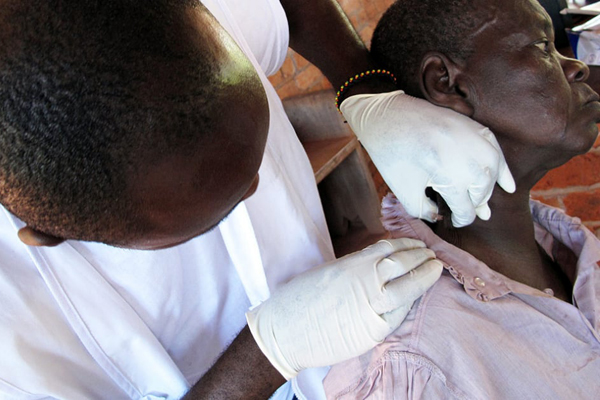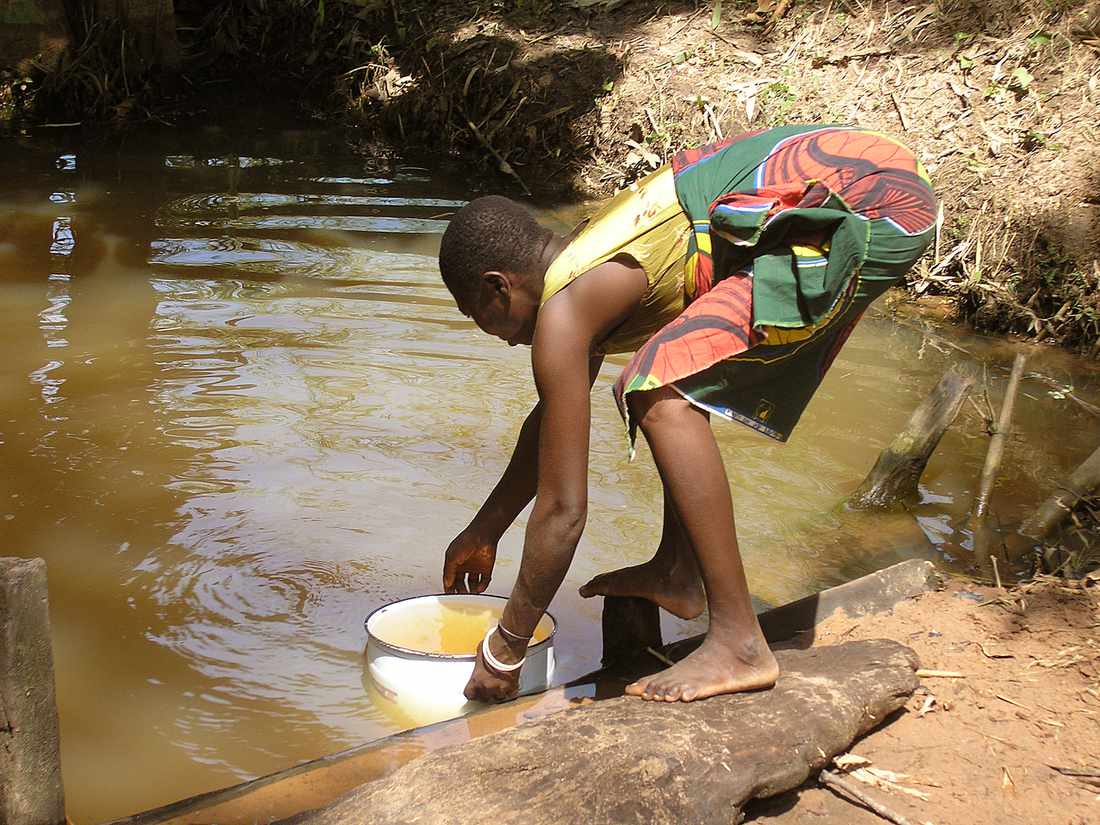Uganda making strides in the fight to eliminate sleeping sickness

Diagnosing sleeping sickness involves invasive tests to confirm a positive result by the rapid diagnostic tests used for community screening. Photo / www.who.int
What you need to know:
- At the heart of this success story is diagnostic testing, without which disease elimination and surveillance would be impossible according to Professor Joseph Ndung’u, the executive director of Foundation for Innovative New Diagnostics (FIND).
Uganda, Rwanda and Benin have each been commended by the World Health Organisation (WHO) for eliminating at least one form of sleeping sickness as a public health concern. This brings the world a significant step closer to meeting the WHO target of global elimination of this disease by 2030.
At the heart of this success story is diagnostic testing, without which disease elimination and surveillance would be impossible according to Professor Joseph Ndung’u, the executive director of Foundation for Innovative New Diagnostics (FIND).
Sleeping sickness, also known as human African trypanosomiasis (HAT), has been a scourge in sub-Saharan Africa for thousands of years. Caused by a parasite transmitted by the tsetse fly, no symptoms are apparent at first. Yet following infection, the parasite gradually burrows deep into all the body organs, and eventually the central nervous system causing poor coordination, confusion, and loss of sleep. Without treatment, HAT is almost always fatal. Even with life-saving intervention, debilitating injuries may endure.
Extent
More than 75 percent land mass in Uganda is infested with tsetse flies since they live in savannah woodland, forests, riverine, bushes, shrubs and swampy areas. Both male and female tsetse flies depend on blood from humans, livestock and wild game and, hence, spread the disease through this mechanism.
There are two types of the disease named for the areas of Africa where they are found. The West African sleeping sickness is a long-term (chronic) infection that can last for years. The East African sleeping sickness is a short-term (acute) illness that may last several weeks to months.
According to Prof Ndung’u, Uganda has both forms of sleeping sickness and the acute type that presents like malaria is found in the eastern and central regions near Lake Kyoga.
“The chronic form of the disease affects people in about seven districts of the West Nile region. It takes some time for one to realise that they have the disease and it may take about one or two years before one is found to have the disease,” he says.
Although we are celebrating the elimination of the chronic type of sleeping sickness, the acute one, which is now found in a very small area can be controlled if addressed. With new tools and renewed national and international effort, WHO put the disease on a roadmap for the period 2012 to 2020 in which the disease would have been eliminated as a public health concern.
According to Prof Ndung’u, infections have decreased faster than the WHO targets and complete elimination by 2030 is a realistic target for Uganda.
"In the last four years, we have not had more than two cases per year and the last case was reported in June 2020," he adds.
Challenge
Asked why sleeping sickness has persisted in Uganda, Prof Ndung’u says the problem is not only in Uganda but a challenge for 36 countries that have been endemic for either form of the disease or both with Democratic Republic of Congo, Angola and Central African Republic having the highest number of cases,
The challenge, according to Dr Ndung’u, is that the disease thrives in situations of instability and insecurity because the tsetse fly vector of the disease multiplies more in bushy areas where there is no agriculture or human activity. If there are no control efforts, the vector spreads rapidly.
“This is one of the neglected tropical diseases that affect people in rural areas that do not attract much national attention. What was happening in Uganda was also happening elsewhere in Africa until in 1989 when the WHO and African Union set out an appeal to the international community to double their efforts and support,” he says, adding that the instability that existed in northern and northwestern Uganda to a great extent encouraged the progress of this disease.
Curbing the disease
With a lot of effort from external assistance such as Doctors without borders and WHO, massive screening of individuals in a bid to identify key populations that were infected was done.
“Intensive screening was done to identify people who were exposed and these were treated. This aggressive fight yielded positive results and with time, there was a decline in the number of cases. Increased human activity in Eastern and Southern Uganda also helped in the reduction of the number of the acute cases of the disease,” Prof Ndung’u says.
In 2012, the first ever diagnostic test was developed and clinical trials performed. The results revealed that the disease had continued to decrease and it became apparent that if the efforts were sustained, there was a likelihood that it would be eliminated.
“There was training of health workers on how to perform tests since it takes a very short time to get the results. About 212 health facilities could carry out the diagnostic tests that would help to identify individuals that were exposed. There was a need for a confirmatory test of the disease so 12 laboratories that were strategically located in those districts were identified and lab technicians were trained on how to carry out the confirmatory tests,” he says.
The efforts were coupled with community sensitisation and notified people who had been treated for malaria but were not getting better to go and get screened and treated for sleeping sickness from the identified centres.
Signs and symptoms
The two forms of the disease behave differently. With the East African (acute) form, one may develop a fever, headache, and swelling of the body two weeks after exposure.
“When the parasite enters the bloodstream, it affects all the systems of the body. With the acute form, what causes death is damage to the heart and in advanced stages, the parasite goes to the brain, causing psychiatric problems including madness and coma, among others,” Prof Ngung’u says.
In the chronic form, the parasites get into the body but the damage is not as aggressive. Here, one may have clinical signs such as disruption in the sleeping pattern, mental health problems and many times, it is associated with stigma. As part of treatment, such a person should not engage in sexual activity for more than six months.
Tsetse fly bites are painful and one usually develops a sore at the site of the bite within a week. Different people may develop symptoms differently but the symptoms tend to happen within one to four weeks of infection, especially for the acute form.
At first, they may include fever, skin lesions, rash, swelling, or swollen lymph nodes on the back of the neck. After some time, the infection may affect the brain and the fluid surrounding the brain and spinal cord. As the illness gets worse, symptoms may include severe headache, personality change, weight loss, irritability, loss of concentration, progressive confusion, slurred speech, seizures, difficulty walking and talking, sleeping for long periods of the day and insomnia.
However, even in the advanced stage, if one gets treatment, they will get well again. Prof Ndungu recommends that you contact a healthcare provider if you have a fever, rash, or an ulcer on the skin after returning from areas where you may have been bitten by a tsetse fly. Proper diagnosis may involve taking blood samples and a spinal tap (lumbar puncture).
Preventing bites
No vaccine or medicine can prevent African sleeping sickness. But you can avoid being bitten by tsetse flies.
● Wear protective clothing such as long sleeved shirts and pants. The fabric should be thick because Tsetse flies can bite through material.
● Wear khaki, olive or other neutral coloured clothing instead of bright and dark colours.
● Sleep under a treated mosquito net.
● Lock your vehicles if you are travelling in such areas. Do not ride in the back of jeeps, pick-up trucks, or other open vehicles. Tsetse flies are attracted to the dust created by moving vehicles and animals.
● Stay away from bushes. During the hottest part of the day, the tsetse fly will rest in bushes.




